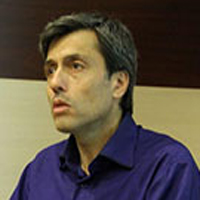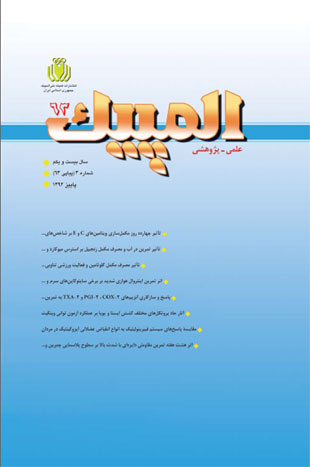Designing and Determine Validity and Reliability a Specific Agility Test for Free Style Wrestling
Author(s):
Abstract:
The purpose of this study was to develop a reliable, valid and specific agility test for freestyle wrestling. So 62 wrestlers participated in this research. 23 wrestlers of Tehran clubs was used for primary study and designing the agility test. 29 wrestlers from Tehran team selected as Tehran group (TG), that 10 of them which had Asian or world medal or had invited to Iran freestyle wrestling national team considered as elite group(EG), also 10 non elite wrestlers as non-elite group (NG) were used for validity and reliability of specific agility test. Wrestlers were tested three times on a specific reactive agility test (RAT) and twice on pre planed agility test (PPAT) and once on 4×9 test. Data analyze from TG used for reliability. For obtaining validity, EG results, was compared with NG. Statistical analyses revealed significant correlation between 4×9 and PPAT (0.75 and 0.70 respectively), between 2 times of PPAT (0.87) and between 2 series of RAT (intraclass correlation coefficient = 0.884). Statistical analyses also showed significant difference between the EG and the NG (p < 0.05) in RAT time means. According to the results, PPAT was reliable and valid for change of direction in freestyle wrestling and moreover RAT was reliable and valid for agility in freestyle wrestling, and as it called here, TMUWAT (Tarbiat Moalem university wrestling agility test) and would be suggested for free style wrestlers.
Keywords:
Language:
Persian
Published:
Olympic quarterly, Volume:21 Issue: 1, 2013
Page:
47
https://www.magiran.com/p1139257
سامانه نویسندگان
مقالات دیگری از این نویسنده (گان)
-
Comparison of metabolic profiles of elite male karate athletes with different physical fitness levels during different phases of simulated competitions
Masoud Rahnama, Hamid Mohebi *,
Metabolism and Exercise a biannual Jounal, -
The response of corticospinal excitability to different intensities of postactivation potentiation in young trained subjects
Hassan Kosari *, Pezhman Motamedi, , Shahriar Gharibzade, Shapour Jaberzadeh
Journal of practical studies of Biosciences in Sport,



